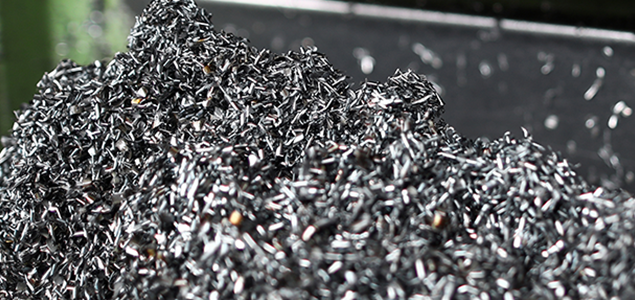The term "heavy metals" is now often replaced by the term "trace metals" (TMEs).
Unlike other contaminants, metals are inorganic compounds: they are minerals with a density greater than 5000kg/m3.
All heavy metals occur naturally in trace amounts in the environment. However, for many of them, their presence has been reinforced by human activity. Heavy metals are used massively in industry, either pure or in the form of alloys, and are generally emitted in the form of very fine particles. They are transported by the wind and spread in the soil and aquatic environments, contaminating the surrounding fauna and flora.
The list of heavy metals includes :
- antimony,
- arsenic
- cadmium,
- nickel
- copper,
- tin,
- iron,
- manganese,
- mercury,
- lead,
- zinc...

Heavy metal issues
Although heavy metals are essential to the environment and to the functioning of living organisms, they are very toxic when present in high concentrations. For this reason, regulations impose very low thresholds.
Impacts on human health
On human health, heavy metal contamination can cause a variety of symptoms. For example:
- Chronic exposure to heavy metals causes fatigue, sleep disorders, neurological and digestive disorders
- They seem to be linked to the development of serious pathologies such as multiple sclerosis and neurodegenerative diseases such as Alzheimer's or Parkinson's
- They also promote respiratory diseases, damage the digestive system, or lead to the development of kidney failure...
Heavy metals are bioaccumulative
Heavy metals tend to bioaccumulate. Thus, they tend to accumulate within an organism at a faster rate than they can be broken down. The concentration of heavy metals in living organisms can thus increase and eventually become toxic. Therefore, the higher an animal is in the food chain, the more it will be exposed to bioaccumulation by heavy metals. Humans are therefore particularly exposed.
The limitations of current analyses
To date, conventional analyses sometimes show certain limitations.
In the case of metals, it is sometimes difficult to correlate concentration thresholds with significant thresholds of potential impacts on living organisms.
This is because :
- Metallic elements exist naturally in the environment, so it is essential to distinguish between contributions of natural origin and those linked to man
- Living organisms need specific metals. Some living organisms are even adapted to live in environments that are particularly rich in metals.
- Metals are present in water as free ions, but they can combine with organic and inorganic elements.
- Only certain forms of the metal can be assimilated and have an effect on organisms: these are the bioavailable forms.
Consequently, complementary approaches are of real interest to assess the health risks associated with the presence of these heavy metals in water.
The contributions of Tame-Water
Well aware of the interest in assessing the toxicity of water related to heavy metals, Tame-Water has developed an innovative "bioassay" approach to assess the potential toxic impacts of 5 heavy metals:
- copper
- lead,
- zinc,
- arsenic,
- mercury.
With a battery of bioprobes and neural network processing, Tame-Water evaluates the possible impacts of bioavailable forms of metals on living organisms.
Tame-Water is thus able to :
- semi-quantify the metal content of the sample,
- assess the toxicity of bioavailable metals,
- take into account potential cocktail effects.
To complete these innovative biological approaches, Tame-Water measures the Metox index according to the TEF Metox 1975 JO 92 method, defined by the Water Agencies. This allows us to establish a toxicity threshold linked to the presence of metals in a given aquatic environment.

